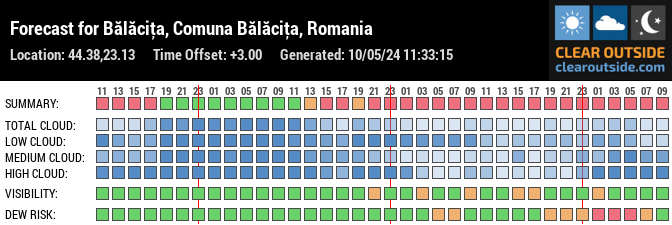Asta primeşti în cutie. Camera, alimentator universal la
220V şi cablu de date USB.
This is what you get, mooded camera, power source at 220V and USB cable.
Carcasa camerei a fost înlocuită cu o carcasă făcută din aliaj de aluminiu aerospaţial 7075 care este printre puţinele aliaje care poate fi prelucrat la o grosime de 1 mm.
Peltierul face transferul de căldură în 2 etape cu o eficienţă mărită şi un consum de numai 50W, dar care poate răci la ∆T = -80oC. La 15V puterea peltierului este de 85W, la 12V este de 60W.
Its 7075 aerospace alloy, one of the few alloys that can withstand machining to 1mm thicknesses. The peltier is a 2-stage high powered job with a max thermal transfer of just 50W, but we can still cool to delta T of -80 with it. At 15V the power of peltier element is 85W, at 12V is 60W.
Carcasa camerei a fost înlocuită cu o carcasă făcută din aliaj de aluminiu aerospaţial 7075 care este printre puţinele aliaje care poate fi prelucrat la o grosime de 1 mm.
Peltierul face transferul de căldură în 2 etape cu o eficienţă mărită şi un consum de numai 50W, dar care poate răci la ∆T = -80oC. La 15V puterea peltierului este de 85W, la 12V este de 60W.
Its 7075 aerospace alloy, one of the few alloys that can withstand machining to 1mm thicknesses. The peltier is a 2-stage high powered job with a max thermal transfer of just 50W, but we can still cool to delta T of -80 with it. At 15V the power of peltier element is 85W, at 12V is 60W.
Sistemul de răcire, aici se poate vedea radiatorul
supradimensionat, care elimină surplusul de căldură de la elementul peltier
care este în contact cu senzorul camerei, şi pe care îl duce cu multe grade
sub temperatura mediului.
The cooling system, here you can see oversized radiator that removes excess of heat from the peltier element wich is in contact with the camera sensor that leads it to many degrees below ambient temperature.
The weight of camera, 1117 grams is reasonable.
Camera împreună cu reducătorul/corectorul William Optics PFLT-4 are 1640 grame.
Here is camera and reducer/flatner WO PFLT-4, 1640 grams.
Camera
împreună cu reducătorul/corectorul William Optics PFLT-4 ataşate refractorului William
Optics Megrez 90mm APO.
Camera and WO PFLT-4 attached at WO Megrez 90 mm APO refractor.
Acum, partea tehnică, am facut dark-uri de 600 secunde şi bias-uri la ISO 800.
Now tehnical part, biases and darks at 600 sec at ISO 800.
Bias, 1/200 sec, ISO 800 processed in PixInsight
1.open file,
2.SampleFormatConversion at 32Bit
3.Histogram Transform
4.Save as .tiff
5.PS6 ->open,
6.resize
7.save for web.
Master Bias 100x processed in PixInsight
1.open file,
2.SampleFormatConversion at 32Bit
3.Histogram Transform
4.Save as .tiff
5.PS6 ->open,
6.resize
7.save for web.
Dark, 596 sec, ISO 800 processed in PixInsight
1.open file,
2.SampleFormatConversion at 32Bit
3.-
4.Save as .tiff
5.PS6 - open,
6.resize
7.save for web.
Urmează testele în teren, când vremea şi-o reveni.
Now i expect the weather to get better to test the camera in the field.
Primele concluzii:
1.Constructia este solida, cu materiale de bună calitate.
2.La acest model conexiunea camera-telescop se face prin intermediul unui inel T2 dar am înţeles că se lucrează la un sistem de adaptare a lentilelor, primul sistem având probleme cu focalizarea, aşa că se lucrează la o versiune mai subţire.
3.Ventilatorul este silentios desi este de dimensiuni mari.
4.Disiparea căldurii se face destul de bine, corpul camerei neîncălzindu-se foarte mult.
5.Camera are filtrul obişnuit înlocuit cu un filtru IR/UV care permite ca 98% din radiaţiile h-alfa să treacă, făcând astfel camera de 4 ori mai sensibilă decât una nemodificată.
6.Camera este sigilată complet, având în faţa senzorului o sticlă transparenta tratată multistrat cu rol antireflex şi de sigilare, fiind asamblată într-o incintă sigilată de asemenea, deci nici-o problemă cu urmele de praf de pe senzor.
7.O sa vorbesc cu Mark să se gândească la un sistem de protecţie împotriva supraîncălzirii.
8.Nu am reusit ca sa setez bine BYEOS-ul, sunt la primele utilizări, ca să vă transmit şi temperaturile exacte până la care a ajuns răcirea.
First conclusions:
1.Solid construction with very good quality materials.
2.At my model the conection camera-scope is an T2 ring, but they work at an lens adapter, the first system heaving problems to focus so they gonna make another version of adapter, more thinner - then you can use clip-in filters.
3.The fan is very quiet even though it is large.
3.Heat dissipation is good, the camera body stays pretty cool.
4.The IR-cut filter is replaced by an IR/UV filter that permits 98% of h-alfa rays to pass, so camera is 4 times more sensible that an unmooded camera.
6.The camera is completly sealed, it has in front of sensor an clear glass threated multicoated and antireflex wich acts as sealant, it is assabled in an dust-free chamber, so bye, bye dust on sensor.
7.I will talk with Mark to think at an overheating protection system, they are anouncing very hot summer days.
8.Mea culpa, being first time user of BYEOS I didn't make it to show you the temperatures of the frames...it would be very COOL!!!!!
Clear skies,
Sabin
Later edit:
Streched in PI
5:1 from central area cropped
5:1 from central area cropped






















